#eocene fossil
Explore tagged Tumblr posts
Text
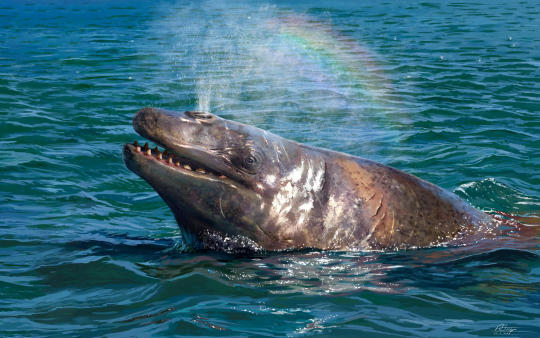
Perucetus colossus by Anthony J. Hutchings.
4K notes
·
View notes
Text

26" Fossil Fish (Knightia) Mass Mortality Plate
#eocene#knightia#fish#multi#fossil fish#fish fossil#png#transparent#Etsy#paleontology#fossil#fossils#prehistoric
235 notes
·
View notes
Text

Stromatolite fossil



The greatest witnesses to the formation of the earth. Spectacular formation.
#stromatolite fossil#stromatolite#microbiology#microorganisms#fossil collection#fossil#fossils#collectibles#special collections#stone aesthetic#geology#rocks and minerals#gemstones#sea fossil#earth science#achat#earth#ancient history#geolocation#geology rocks#collectible#mineral specimen#eocene#natural history#natural life#beauty of nature#collection#museum
433 notes
·
View notes
Text
See this big bird in the Museum’s Hall of Saurischian Dinosaurs! We're open daily from 10 am–5:30 pm. Plan your visit!
#science#amnh#museum#fossil#nature#natural history#dinosaur#fact of the day#did you know#animals#paleontology#birds#eocene#museum of natural history
924 notes
·
View notes
Text
The horror is over, Green River, specifically the Fossil Butte member is done! The Dawn over Eocene fossil lake reveals WAY too many organisms.

Oh boy, this took TWO streams. Fossil Butte is a very diverse deposit, from small insects over tons of plants to a lot of birds, mammals and fish. Soom shale will be very relaxing by comparison.

Three people helped this time with size charts, pooling together not even ALL the organisms form here.
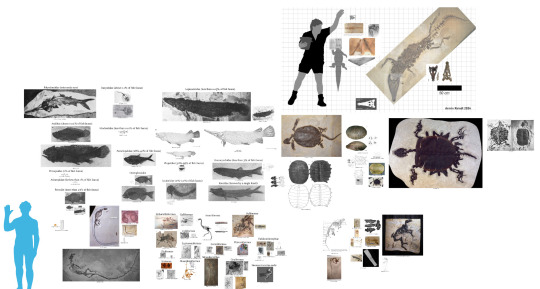
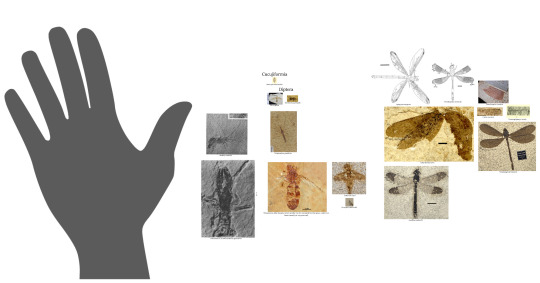

354 notes
·
View notes
Text
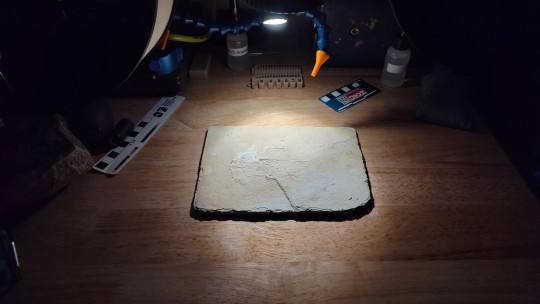

Cockerellites liops for a client 🐟
#click for higher quality#paleontology#palaeontology#paleoblr#palaeoblr#fossils#fossil#fossil prep#green river fish#not bdm#cockerellites liops#eocene
97 notes
·
View notes
Text

Eurohippus sketch. This things feet confuse me.
#digital art#paleoart#primitive horse#horse ancestor#horse#eurohippus#eocene#grube messel#fossil animal#paleontology#fossil mammal
21 notes
·
View notes
Text
Tutcetus: Dwarf Basilosaurid
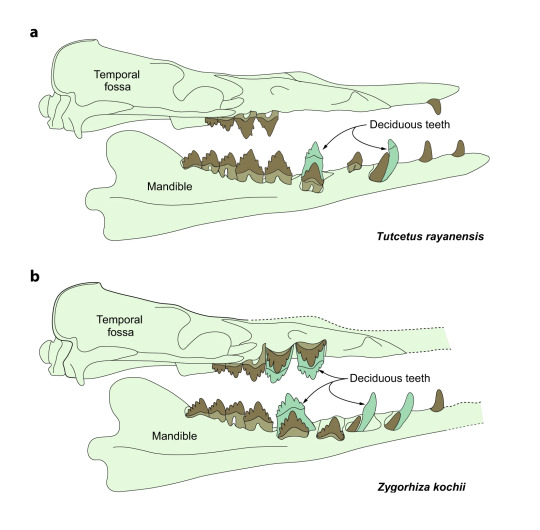

It's funny, barely a week after the reveal of Perucetus, perhaps the largest known basilosaurid so far, we immediately see the description of what may be the smallest.
Tutcetus, named after child king Tutankhamun, is a new species of early whale that may have measured only 2.5 meters. Known from a single skull of what is thought to be a subadult at the very edge of maturity, it is also one of the oldest basilosaurids. The fossil was discovered in the famous Fayum Depression, i.e. one of the most important regions for early whale fossils.
While its generally hard to tell age, the stage of tooth replacement and the fusion of the skull bones indicate that Tutcetus was about to reach maturity, so it likely didn't grow much larger than indicated by the holotype fossil.
Tutcetus seems to be an early diverging basilosaurid (which is paraphyletic according to the authors), with its closest relatives being Ocucajea (a contemporary of Perucetus) and Chrysocetus.
Although our sample size is obviously low, the authors still tried their best to deduce some parts of its biology. For instance, they suggest that the small size of this animal might be related to the warmer temperatures of its time and that Tutcetus followed the mantra of "live fast, die young". They argue that Tutcetus, again based on how its teeth were replaced, matured quickly to reproduce sooner, while never reaching an especially old age. This would contrast later basilosaurids, which would grow slower, reach larger sizes and live longer. But of course more material would go a long way to confirm these suggestions.
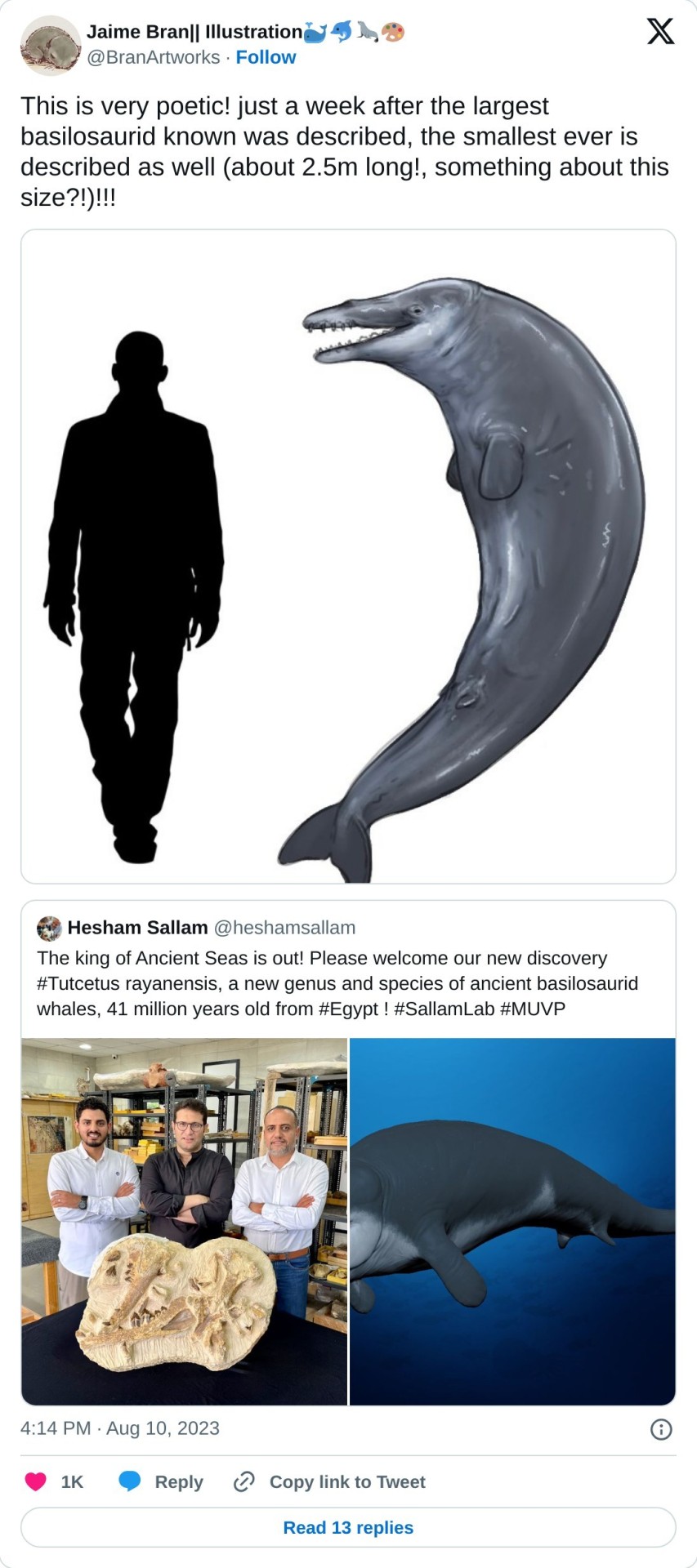
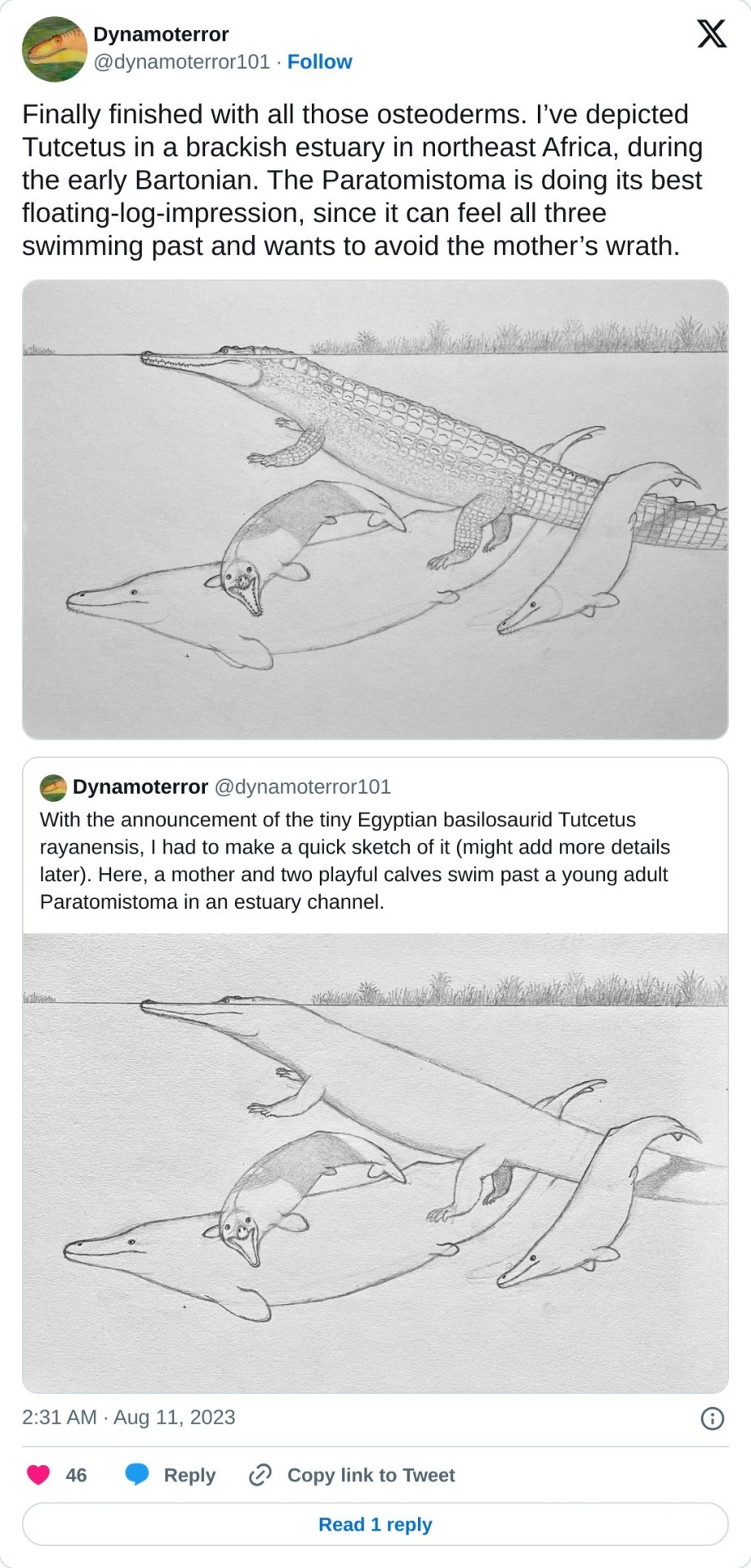
#palaeoblr#paleontology#basilosauridae#whale#cetacean#tutcetus#early whale#evolution#prehistory#eocene#egypt#fossil
586 notes
·
View notes
Text
Fossil Friday : Icaronycteris
Today's spotlight fossil is Icaronycteris, the earliest known bat.
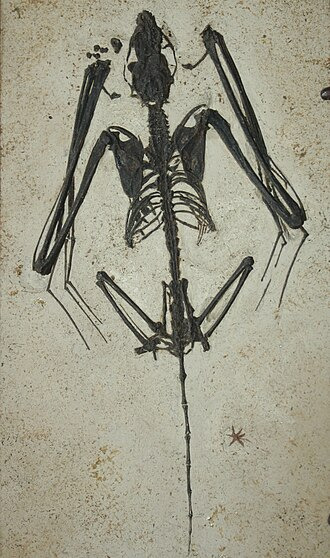
It was found in the Green River Formation lagerstatten of the early Eocene making it about 52.2 million years old. It was a small bat at only 14 cm long with a 37 cm wingspan.

It was very similar to modern bats with some primitive traits like a long tail unattached to skin membranes.
Like modern bats, the anatomy suggests that it hung upside down to sleep and it was one of the first echolocating bats.
Now you know about the earliest bat. Tune in next week for this month's new topic in mineralogy! Fossilize you later!

27 notes
·
View notes
Text
The Dawn of the Age of the Ants
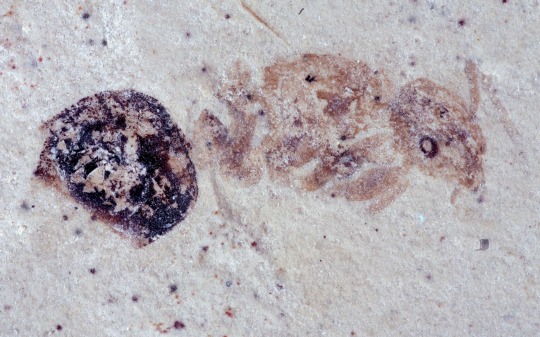
Sometimes a fossils are like photographs. These ants preserved in the Green River seem like they could come alive and walk right out of the stone.
Most fossils of ants are found in amber, due to their small size, sedimentary fossils must have exceptional fine grain detail to make ants recognizable.
The first image is from University of Colorado collection. https://fossilinsects.colorado.edu/
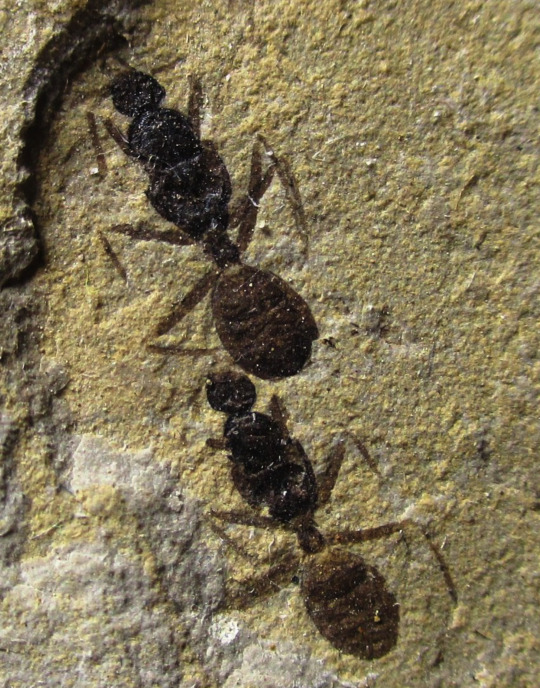
The second image I've been trying to track down-- I don't know where it is, but it is from Green River.
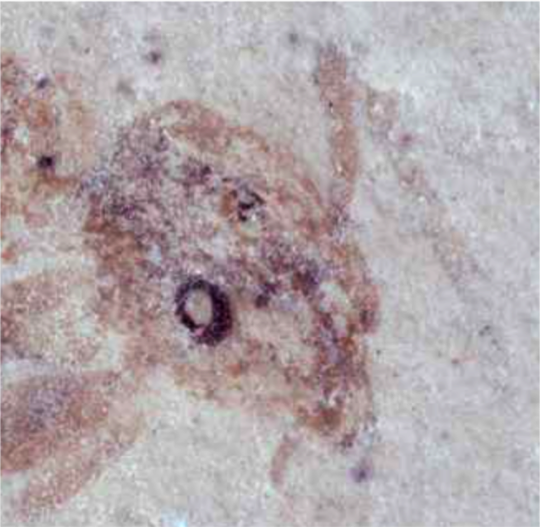
That first fossil is so beautiful I could cry. Look at her eye! what did she see in the Eocene? This at the dawn of the Age of the Ants... did she know her kind would inherit the whole world?
#ants#antposting#bugs#bugblr#insects#invertebrates#ant#antblr#myrmecology#antkeeping#fossil#green river#insect fossil#arthropod#arthropods#eocene
122 notes
·
View notes
Photo

Fossil Chimaerid Pallete - Callorhinchus regulbiensis, Woolwich Beds, London Clay Formation, Eocene, Beltinge, Herne Bay, UK - COA
This extraordinary Fossil Chimaerid Pallete comes from the species Callorhinchus regulbiensis, discovered in the Woolwich Beds, part of the London Clay Formation, in Beltinge, Herne Bay, UK. The fossil dates to the Eocene period and is a 100% genuine specimen, accompanied by a Certificate of Authenticity. The Chimaerid Pallete is a rare and valuable specimen that offers a rare glimpse into the ancient marine life of the Eocene period.
Geology and Fossil Type
Geological Stage: Eocene
Depositional Environment: Marine (The Woolwich Beds, part of the London Clay Formation, represent a shallow marine environment during the Eocene, rich in marine life, including species like Callorhinchus regulbiensis)
Family: Chimaeridae (the family of chimaeras or ratfish, which are closely related to sharks and rays)
Superfamily: Chimaeroidea
Order: Chimaeriformes (the order of chimaeras, also known as ghost sharks)
Morphology Features
The Callorhinchus regulbiensis chimaerid pallete shows the characteristic features of the chimaera family, with its flattened structure and distinct tooth arrangement that helped the fish process its food. The fossil is well-preserved, providing clear insights into the tooth structure and the palleted arrangement that would have allowed the fish to crush prey. This type of pallete is typically seen in species that fed on invertebrates, such as mollusks, crustaceans, and small fish.
Biozone
The London Clay Formation biozone is renowned for its marine fossils, which offer insight into the warm seas of the Eocene period. Fossils from this biozone help us understand the diverse marine ecosystems of the time, including the species that roamed the waters, such as the Callorhinchus regulbiensis, which has since become extinct.
Notable Features
This fossil is especially notable for its excellent preservation, which highlights the morphological features of the Callorhinchus regulbiensis chimaera. The tooth structure is clear and well-defined, and the overall condition of the fossil makes it an outstanding specimen for marine life enthusiasts and collectors of Eocene fossils.
Size and Presentation
Scale Rule Squares: 1cm
Full sizing is provided in the photos, so you can see the exact size of the pallete.
Actual Fossil: The fossil pictured is the exact piece you will receive.
Key Selling Points
100% Genuine Fossil
Comes with a Certificate of Authenticity
A well-preserved chimaerid pallete from Callorhinchus regulbiensis
Clear tooth structure and morphological features
Perfect for collectors and those interested in Eocene marine life
This Callorhinchus regulbiensis Fossil Chimaerid Pallete is a rare and significant fossil from the Eocene period. It offers a glimpse into the marine ecosystems of the past and is a fantastic addition to any collection of prehistoric marine life.
#fossil chimaerid#Callorhinchus regulbiensis#chimaerid pallete fossil#Woolwich Beds fossil#London Clay Formation fossil#Eocene fossil#Beltinge fossil#Herne Bay fossil#UK fossils#genuine fossil specimen#fossil identification#fossil with certificate#ancient fish fossil#marine life fossil#natural history#geology#fossil collector#chimaera fossil
1 note
·
View note
Text

A fossilized fish of a Jianghanichthys hubeiensis from Jianghan City, Songei County, Hubei Province, China. This Eocene aged fish is a cypriniform which are represented today by cyprinids like carp as well as their closest relatives like loaches, suckers, and shiners. These fossils were once a fairly common sight in the past, though their supply has dwindled over the years.
#fish#fossils#paleontology#palaeontology#paleo#palaeo#jianghanichthys#jianghanichthyidae#carp#eocene#cenozoic#prehistoric#science#paleoblr#ジャンハンイクチス#ジャンハンイクチス科#化石#古生物学
11 notes
·
View notes
Text


5.75" Petrified "Colla Wood" With Chrysocolla & Malachite - Turkey
#eocene#chrysocolla#malachite#petrified wood#fossil#fossils#png#transparent#turkey#colla wood#geology#paleontology#plant#plant fossil
148 notes
·
View notes
Text

Imagine a hefty bird that stood taller than a full-grown human with a huge, crushing break. This Fossil Friday, meet Gastornis gigantea. This powerful bird was more than 6 ft (1.8 m) tall and weighed over 330 lbs (150 kg). It lived some 55 million years ago during the Eocene. Once assumed to be a carnivore that hunted small animals, scientists now think this extinct avian was actually a vegetarian related to ducks and geese.
Photo: © AMNH
#science#amnh#fossil#museum#natural history#nature#animals#gastronis gigantea#fossil friday#paleontology#birds#did you know#fact of the day#eocene
919 notes
·
View notes
Text
FEBUZOIC DAY 4
Queensland, Australia - Ypresian stage, 55Ma before present

300,000 years ago, the planet experienced a short, geologically speaking, spike in temperatures that caused somewhere between 5-8C of warming. This spike marked the transition from the Palaeocene epoch to the Eocene, and although the event is over, the already hot world of the Cenozoic is slowly getting hotter. Dawn breaks on a greenhouse planet.
As the light touches the shores of lake Murgon, the last of the bats retreat into the shadows, and the crocodiles, giant snakes and odd wading birds that line the shore are revealed. The plethora of water-loving insects begins to hum in the suns rays, but their noise in punctured by a new sound; birdsong. A small, relatively unassuming looking bird hops along the rocks of the shoreline, stopping occasionally to produce short bursts of complex vocalisation. He is a one of the first passerines, a group that in the modern day contains around half of all bird species, from crows to blackbirds to the New Zealand rock wren.
Birds, the only dinosaurs to have survived the extinction event 11 million years ago, have exploded in diversity and are now fulfilling a huge number of roles in the ecosystem. There are now a huge amount of birds calling to eachother in the dawn, and the songs of this little bird pick it out from the crowd of not just other bird species, but other birds of the same species. As time passes, the evolutionary process will select for more and more intricate songs until they arrive in the Holocene in their beautiful modern form.
#Eocene#palaeostuff#anthem posts#anthems art#palaeontology#paleoart#palaeoart#palaeoblr#passeriformes#FYI the fossil this part is based off is fragmentary and it is currently in question as to whether it is actually even a passeriforme at al#but ultimately its a bird its a miracle if any of them fossilise the first passerine could be living in hordes at Murgon and we'd never kno#Febuzoic 2024
64 notes
·
View notes
Text








Ambulocetus is a genus of early amphibious cetacean which lived throughout what is now central asia during the Lutetian stage of the early Eocene some 48 to 47 million years ago. The first known remains of ambulocetus consisting of a fairly complete skeleton were recovered from the upper Kuldana Formation in the Kala Chitta Hills of Punjab, Pakistan in 1991 during a joint fossil expedition by Howard University and the Geological Survey of Pakistan by paleontologists Mohammad Arif and Hans Thewissen. Initially the duo couldn’t afford to ship and fully prepare the specimen so Thewissen took the skull with him to the USA whilst Arif kept the rest of the skeleton in Pakistan. In October 1992, Thewissen presented his research of the skull to a vertebrate paleontology convention in Toronto, Canada. The next year, American paleontologist Philip D. Gingerich paid for the rest of the skeleton to be shipped to the United States. In 1994, the formal description of the remains was published by Thewissen, Arif, and mammal paleontologist Sayed Taseer Hussain. They identified the remains as clearly belonging to an amphibious cetacean, and so they named it Ambulocetus natans. The genus name comes from Latin ambulare "to walk" and cetus "whale", and the species name natans "swimming". Reaching around 10ft (3.05m) long and 310 to 660lbs (140 to 300kgs) in weight. Ambulocetus had a narrow, streamlined body, and a long, broad snout, with eyes positioned at the very top of its head. Additionally, its ears possessed similar traits to modern cetaceans, which are specialized for hearing and detecting certain frequencies underwater. It is thought to have swum much like a modern river otter, tucking in its forelimbs while alternating its hind limbs for propulsion, as well as undulating the torso and tail. It may have had webbed feet, and unlike its modern relatives, lacked a tail fluke. On land, Ambulocetus may have walked much like a sea lion.
Art used in this video can be found at the following links


#pleistocene pride#pliestocene pride#prehistoric#whale#ambulocetus#evolution#eocene#cenozoic#whale evolution#marine mammal#fossil#animal facts
8 notes
·
View notes